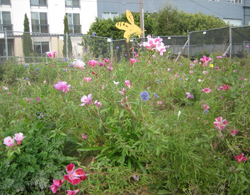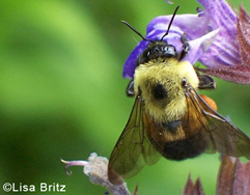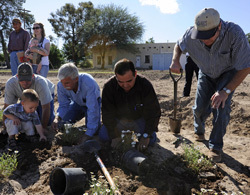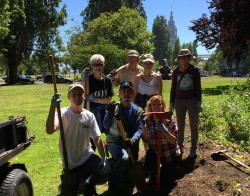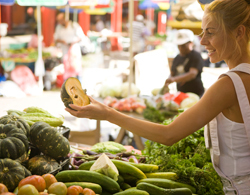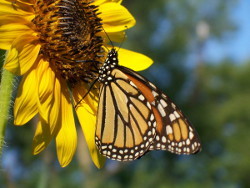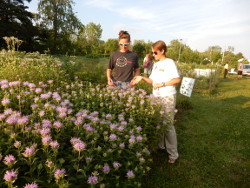7 Things You Can Do for Pollinators
1. PLANT FOR POLLINATORS
- Habitat opportunities abound on every landscape – from window boxes to acres of farms to corporate campuses to utility and roadside corridors – every site can be habitat.
- Utilize plants native to your area (or at the least, non-invasive for your area).
- Utilize the Ecoregional Planting Guides and the Garden Recipe Cards to create or enhance your pollinator garden. Decide among the plant material options - seeds, plugs, plants or a combination.
- Know your soil type and select appropriate plant material.
- Plant in clusters to create a "target' for pollinators to find.
- Plant for continuous bloom throughout the growing season from spring to fall.
- Select a site that is removed from wind, has at least partial sun, and can provide water.
- Allow material from dead branches and logs remain as nesting sites; reduce mulch to allow patches of bare ground for ground-nesting bees to utilize; consider installing wood nesting blocks for wood-nesting natives.
2. REDUCE OR ELIMINATE THE IMPACT OF PESTICIDES.
- Check out the Pesticides Learning Center on the Pollinator Partnership website to learn more
about the interactions between pollinators and pesticides!
- Where possible, avoid pest problems in the first place by burying infested plant residues, removing pest habitat, and planting native plants that encourage natural enemies of pests.
- Practice Integrated Pest Management (IPM).
- If you are a farmer or pesticide applicator, check out our Pesticide Education Module.
- If you must use pesticides, read and follow ALL label directions carefully.
3. BECOME A BEE FRIENDLY GARDEN MEMBER
- Join Bee Friendly Gardening to showcase your commitment to pollinator health! Connect with a network of gardeners all across North America and beyond.
- If you are a farmer or rancher there are other options for you. Check out the Bee Friendly Farming page to learn more.
4. REACH OUT TO OTHERS – INFORM AND INSPIRE
- Utilize all the materials available to help you tell the story of pollinators.
- Especially during National Pollinator Week (June 17-23, 2024).
- Tell local and state government officials that you care about pollinator health.
5. SUPPORT LOCAL BEES AND BEEKEEPERS.
- Buying local honey supports the beekeepers in your area.
- If you're concerned about the number of chemicals use in agriculture, buy organic.
- If you're concerned about contributions to global carbon emissions, buy local.
6. CONSERVE ALL OF OUR RESOURCES; USE LESS AND REDUCE YOUR IMPACT.
- Pollinators are dramatically affected by extremes in weather.
- Climate change puts pressure on native ranges and overwintering sites.
7. SUPPORT THE WORK OF GROUPS PROMOTING SCIENCE BASED, PRACTICAL EFFORTS FOR POLLINATORS.
Donate
